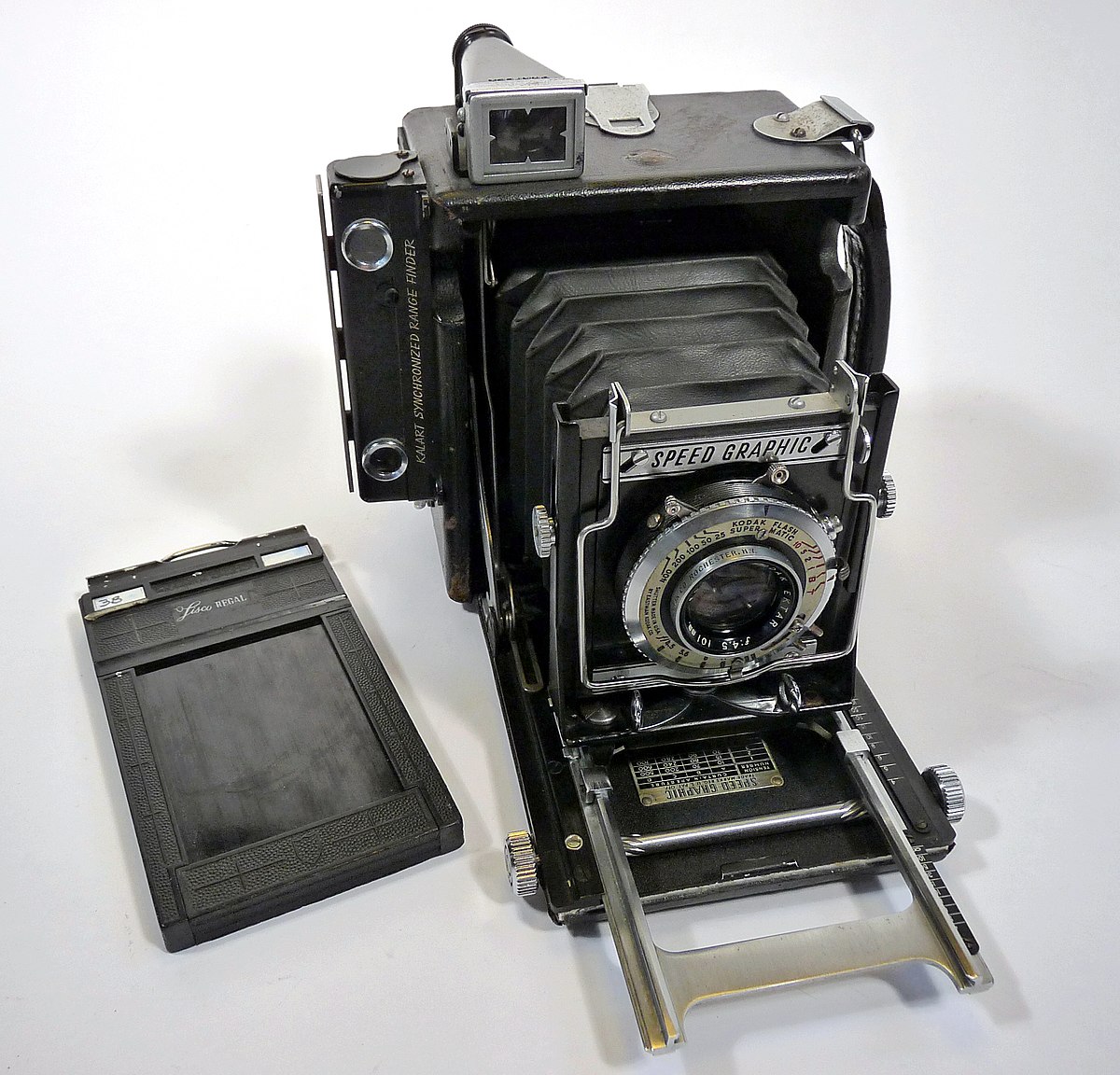Ansel Adams did use Speed Graphics and other press-type cameras, as did many other artists, but generally not as their main camera.
Largely reaffirming what has been said, Speed Graphics and their simpler Crown Graphic siblings were very good hand-held cameras for working quickly on the move. But once a photographer slowed down for more precise or contemplative work there were better options.
For one, many of the artists and commercial photographers preferred to work with 8x10 film. It allowed better detail, could be used to make contact 8x10 prints, and for those who did retouching on film the larger size was much easier to work with. 4x5 was sort of the APS of the day through the 1930s and '40s. (Side note: There was a "Miniature" Speed Graphic which used 120 film, what we now call medium format.)
Second, the Graphics had limited front movement and no back movement in a day when camera movements were often necessary to deal with the limited depth of field of the large format lenses and were used routinely for perspective correction.
EDIT TO ADD: The small size of the Graphic lens board limited the choice of lenses, plus the camera could not be closed with a large lens in place.
And I'll throw in that the Graphic rangefinders were generally not very precise, at least not without frequent calibration -- definitely not a substitute for careful focus on the ground glass. Which meant the photographer wanted to work with a tripod whenever possible and there was no reason not to use a more flexible view camera.
As an aside, a number of well known photographers did use the Graflex large format SLR camera made by the same company -- Dorothea Lange, and Edward Weston come to mind.
Gato
--
Portraits, fantasy, cosplay and such (mildly NSFW)
https://www.instagram.com/jrsprawlsphoto/
.
Personal pictures, kitty cats, road trips, and rural nostalgia:
https://www.instagram.com/j.r.sprawls/
